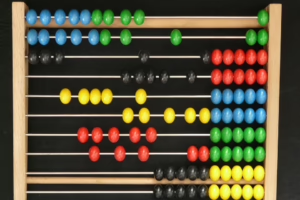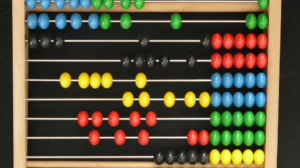Unlocking the Secrets: The Power and Beauty of Mathematical Formulas
Mathematics is often seen as a dry and austere discipline, filled with symbols and numbers that can intimidate those unacquainted with its language. However, beneath the surface lies a vibrant world where elegance meets utility, where abstract concepts manifest in tangible ways. At the heart of this exploration are mathematical formulas, the succinct language that encapsulates complex ideas, relationships, and phenomena. This article unveils the beauty and power of mathematical formulas, revealing how they underpin our understanding of the universe, drive technological advancements, and inspire creativity.
1. The Essence of Mathematical Formulas
Mathematical formulas serve as a bridge between abstract thought and practical application. Formulas are not just equations; they encapsulate fundamental truths. A formula is a concise expression of a mathematical relationship, often taking the form of a sequence of symbols and numbers. For example, the equation (E=mc^2) expresses the principle of mass-energy equivalence, which revolutionized physics. This formula, along with others, highlights how mathematical relationships reflect physical realities.
1.1. Structure and Syntax
Understanding the anatomy of a formula is essential for unlocking its secrets. Formulas typically consist of variables, constants, operators, and functions. Each component carries specific meanings, and their arrangement conveys relationships between quantities. For instance, in the formula for the area of a circle, (A = \pi r^2), (A) represents the area, (r) is the radius, and (\pi) is a mathematical constant. This simple equation encapsulates the relationship between a circle’s dimensions and its area.
1.2. From Algebra to Calculus
Formulas exist across various branches of mathematics, serving different purposes. From algebraic equations that describe linear relationships to calculus formulas that allow for the analysis of motion and change, each formula provides tools for problem-solving. For instance, the Fundamental Theorem of Calculus, which connects differentiation and integration, is encapsulated in the equation:
[F(b) – F(a) = \int_a^b f(x) \, dx
]
Here, (F) is the antiderivative of (f), and the equation expresses a profound relationship between the accumulation of quantities and instantaneous rates of change.
2. The Power of Mathematical Formulas
Mathematical formulas empower us to understand, predict, and manipulate the world around us. They serve as tools in various fields, from science and engineering to finance and computer science.
2.1. Physics: Unraveling the Universe
In physics, formulas are essential for describing natural phenomena. From Newton’s laws of motion:
[F = ma
]
to Einstein’s theory of relativity, mathematical equations encapsulate the principles that govern the universe.
2.1.1. Newton’s Laws
Newton’s second law, (F = ma), relates force ((F)), mass ((m)), and acceleration ((a)). This simple yet profound formula allows us to predict how objects will behave under various conditions. For example, it enables engineers to design safer vehicles by calculating the forces acting on them during a crash.
2.1.2. The Relativity of Space and Time
Einstein’s mass-energy equivalence, (E=mc^2), is another example of the power of mathematical formulas. It reveals that mass can be converted into energy and vice versa, a principle that has profound implications in fields like nuclear physics and cosmology.
2.2. Chemistry: The Language of Reactions
In chemistry, formulas represent substances and chemical reactions. The molecular formula (H_2O) indicates the composition of water, while chemical equations like:
[2H_2 + O_2 \rightarrow 2H_2O
]
illustrate how reactants transform into products. These formulas allow chemists to predict the outcomes of reactions and understand the behavior of substances at the molecular level.
2.3. Economics: Predicting Trends
Mathematics also plays a crucial role in economics. Formulas such as the supply and demand equation illustrate the relationship between market factors:
[Q_d = D(P), \quad Q_s = S(P)
]
where (Q_d) is the quantity demanded, (Q_s) is the quantity supplied, and (P) represents price. These equations help economists model market behaviors and predict economic trends.
2.4. Technology: Algorithms and Computation
In the digital age, mathematical formulas underlie algorithms that drive computer science and technology. From encryption algorithms that ensure data security to algorithms governing artificial intelligence, mathematical formulas enable computation, data analysis, and machine learning.
3. The Beauty of Mathematical Formulas
The aesthetic appeal of mathematical formulas is often overlooked. However, the elegance of a well-constructed formula can evoke a sense of beauty akin to art and poetry.
3.1. Elegance in Simplicity
One of the hallmarks of beauty in mathematics is elegance, often manifested in simplicity. Consider Euler’s formula:
[e^{i\pi} + 1 = 0
]
This equation links five fundamental mathematical constants: (e) (Euler’s number), (i) (the imaginary unit), (\pi) (the ratio of a circle’s circumference to its diameter), (1), and (0). The profound relationship expressed in just a few symbols exemplifies harmony in mathematics.
3.2. Symmetry and Aesthetics
Symmetry is another aspect that contributes to the beauty of mathematics. Many formulas exhibit symmetrical properties, reflecting balance and order. For instance, the quadratic formula:
[x = \frac{-b \pm \sqrt{b^2 – 4ac}}{2a}
]
has an inherent symmetry in its structure and provides insights into the nature of quadratic equations.
3.3. Fractals and Patterns
Mathematical patterns and structures, such as fractals, showcase both beauty and complexity. The Mandelbrot set, defined by an iterative formula, generates intricate and infinitely detailed patterns that captivate the viewer’s imagination. These visual representations of mathematical concepts bridge the gap between mathematics and art, illustrating the aesthetic dimension of formulas.
4. The Cultural Impact of Mathematical Formulas
Mathematical formulas transcend the boundaries of academia. They permeate culture, influencing art, music, literature, and philosophy.
4.1. Art and Mathematics
Many artists have drawn inspiration from mathematical principles. The Fibonacci sequence, which appears in nature, has influenced the composition and layout of various artworks. Similarly, artists like M.C. Escher explored mathematical concepts through tessellations and impossibility structures, blurring the lines between mathematics and visual representation.
4.2. Music and Mathematical Relationships
In music, mathematical relationships underpin harmony, rhythm, and structure. The concept of tuning and scales can be expressed through mathematical ratios, creating a bridge between mathematics and music theory. Composers like J.S. Bach and Arnold Schoenberg were known to incorporate mathematical principles into their compositions.
4.3. Literature and Philosophy
Mathematics has also inspired philosophical inquiries into the nature of reality and existence. Thinkers like Plato and Descartes explored mathematical concepts in their philosophies. The relationship between mathematics and language has been a subject of study, revealing how mathematical ideas can elucidate complex literary themes.
5. The Future of Mathematical Formulas
As we delve into the future, the role of mathematical formulas will continue to evolve. The convergence of mathematics and technology promises new possibilities and challenges.
5.1. Artificial Intelligence and Machine Learning
In the era of artificial intelligence, mathematical formulas are becoming increasingly important for developing algorithms that can learn and adapt. Statistical models, neural networks, and optimization algorithms rely on mathematical foundations to process vast amounts of data and make predictions.
5.2. Quantum Computing
Quantum computing, a frontier of technological innovation, hinges on complex mathematical concepts. Quantum algorithms leverage mathematical formulas to solve problems deemed intractable by classical computing methods. This potential shift may revolutionize fields ranging from cryptography to drug discovery.
5.3. Ethical Considerations
As the power of mathematics grows, so do ethical considerations. The application of mathematical formulas in data science and machine learning raises questions about bias, privacy, and accountability. Addressing these concerns requires a thoughtful intersection of mathematics, ethics, and societal impact.
Conclusion
Mathematical formulas are more than mere symbols; they represent the language of the universe and a testament to human creativity. Their beauty lies in their ability to distill complex relationships into concise expressions, while their power shapes our understanding of the world.
From the foundational laws of physics to the artistic interpretations of mathematical patterns, formulas connect diverse fields and inspire wonder. As we continue to explore the depths of mathematics, we unlock not only the secrets of the universe but also a deeper appreciation for the elegance and intricacy that mathematics offers.
By embracing the beauty and power of mathematical formulas, we pave the way for future discoveries, innovations, and artistic expressions, ensuring that the world of mathematics remains vibrant and dynamic for generations to come.


























Add Comment